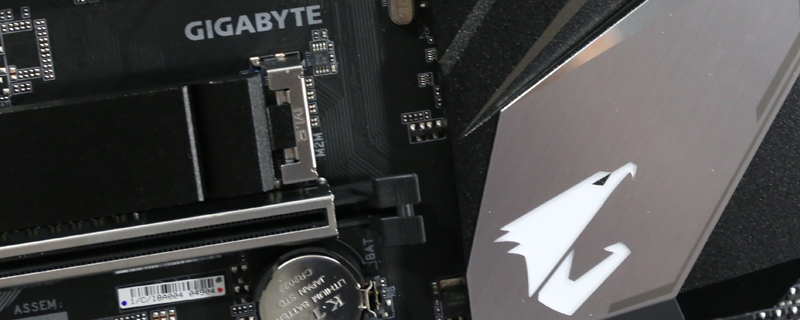Gigabyte Z390 Aorus Pro Review
Conclusion
That’s better.
It can’t have escaped your attention that us telling the truth about certain bits of hardware doesn’t always go down well with the manufacturers. To this end we had to buy this board ourselves to test it despite emaling since its launch without a single reply. It’s huge shame that they hadn’t more faith in their design team as clearly the rejig has worked wonders for the Z390 Aorus Pro.
Aesthetically the Aorus range from Gigabyte has been one of our favourites in recent times. The looks of the board are always really good but what sets them apart from the competition is the light up slots for both DIMM and PCI Express. Along with an area of lighting by the ATX 24 pin they certainly had embraced the new RGB ethos that has swept the PC hardware world. The Z390 Aorus Pro sadly dispenses with the PCI Express lighting, but otherwise the DIMM slots still light up and there is plenty of nicely saturated lighting to be found across the board in the logos and branding. The majority of the slots are reinforced too which might seem like the kind of thing that isn’t massively interesting, but if you’ve ever had a graphics card pull a PCI Express slot off the PCB then you’ll understand that the best safety measures are ones you don’t appreciate until you need them and then suddenly it’s a life-saver.
Cooling is the big talking point and here Gigabyte have absolutely hit it out of the park. We grew tired of their poor heatsink designs limiting the the low end VRM capabilities due to soaring temperatures, which had a knock-on effect in performance terms. With the Z390 Aorus Pro they have gone back to the drawing board and beefed things up considerably in terms of both number of power phases available and how well they are cooled. Even with our i9-9900K overclocked to 5 GHz across all eight cores the Aorus Pro was barely ruffled, with the VRM temperatures hitting a peak of 49°C at stock and only 54°C when our overclock was thrashing the heck out of the system. This is a massive step forwards. We really can’t emphasise this enough. Whilst publicly they claimed there wasn’t an issue on the older design, our testing showed their was and the fact they’ve re-designed it for the Z390 only shows how correct our findings were. Own your mistakes, fix them as they have here, and the world is a happier place.Â
Performance was pretty good in every test. The overclocked setup rarely challenged the top of the graphs, but neither was it ever disappointing. All the Z390s are tightly bunched and a single percent improvement or retrogression would dramatically change the order of results. However, at stock, in the ‘fit and forget’ area of the market, the Gigabyte Z390 Aorus Pro was an absolute star, regularly challenging the MSI MEG ACE, a motherboard which performed so well at stock we didn’t think anything would ever get close to it. If you’re the type of user who likes to build a system and let the automatic turbo function do all your overclocking for you but otherwise run at stock settings then the Aorus Pro unquestionably should be high on your list.
The only area at all that we feel needs a little finessing is the loadline calibration which was either too aggressive or not aggressive enough. Fortunately this is a relatively simple fix and once the BIOS people at Gigabyte have had time to smooth off the rough edges we’re sure it will soon be patched in an update although it does make you wonder why this hasnt been done already as the board has been out ages?
Having VRM’s that dont overheat is hardly innovative but this is such a huge step in the right direction for Gigabyte they actually deserve praise for it. Its just a shame they were not confident enough in their product that they actually sent it to us their selves.Â
Discuss the Gigabyte Z390 Aorus Pro in our OC3D Forums.




